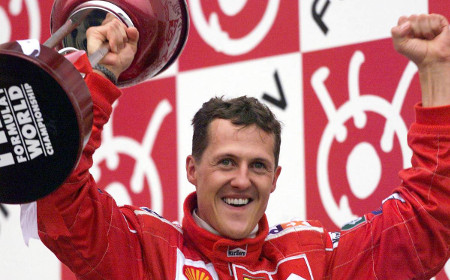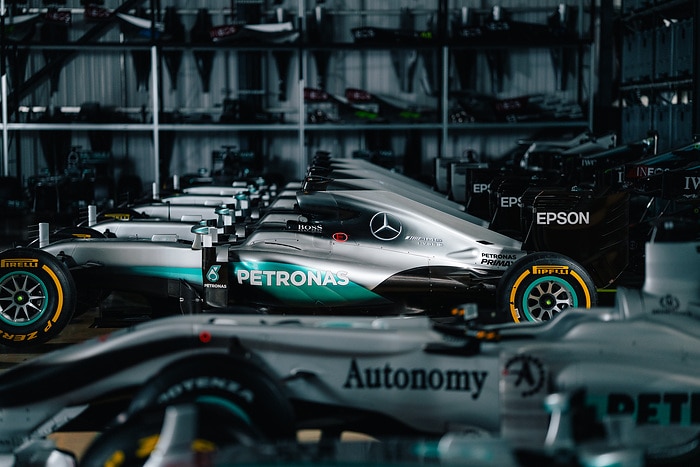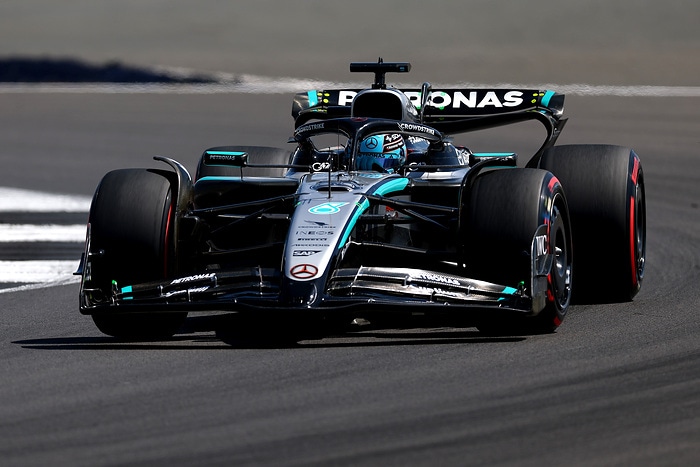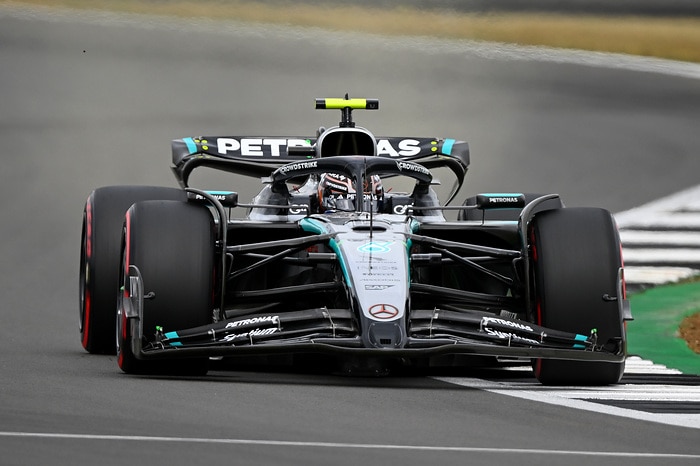
Over this week James is answering fans’ burning questions on F1, while the sport takes a summer break.
We’ve had a big response already with lots of questions on the Mercedes vs Ferrari battle, the future of Fernando Alonso, the F1 calendar, young drivers, TV paywalls, F1 rules – the list goes on. Please keep them coming in.
Here is the first batch of answers.
Craig Taylor: “What’s really going on behind the boardroom doors at McLaren Honda? Will there be a customer Mercedes engine in the McLaren chassis next year and if there were to be, where would that leave Honda?”
I think that possibility has receded, Craig and now it’s either stick with Honda or move to Renault. As the Renault is the least performing of the rival engines, it’s a bit of a case of ‘better the devil you know’; also you are back to being a customer in the Renault scenario and with Christian Horner and Red Bull likely to get their elbows out ahead of you in the queue, it’s not a great platform for growth.
Staying with Honda is the only way to succeed, but it’s a question of how badly damaged the relationship is due to the way Honda deceived McLaren about the performance and reliability of its new engine before it ran in the car for the first time and how the two sides have moved forward from there.
Aelfwald: “When you look at the current grid it seems there’s a lot of top level drivers. Yet in Schumacher’s day he stood head and shoulders above the rest, with only maybe Hakkinen being on a similar level.
My question is are there really that many top level drivers today compared to the Schumacher era or has the bar been lowered and today’s drivers are actually more comparable to the Alesis, Montoyas and Villeneuves of the Schumacher era?
What a great question! You are right that Schumacher was head and shoulders the best, with Hakkinen able to sustain a challenge to him for a few years only 1998-2000, Prost and Mansell moving on early in his career and Senna passing away. The red sea parted a left him a path to greatness!
Alonso came along and gave him a hard time at the end of his career, but in between it was all Schumacher. Ferrari had also built a hell of a machine around him, with every single detail taken care of to give a competitive advantage. So it probably made him look a bit better than he was. But he was top class, clearly.
We now have a four time champion, a three time champion and a two time champion as well as some very exciting younger drivers.
My view is that Hamilton and Alonso in their prime are a match for Schumacher in his. None of them are perfect but they are all exceptional and, on the whole, consistently so. Vettel is also exceptional and works very hard, but has a slightly narrower operating window in the way he needs the cars and the rules to be, as 2014 and 2016 showed.
Verstappen has all the tools to be exceptional, but is still only 19 and needs to focus all his energies on developing into a champion. It is not a given that he will do that, but he certainly ought to. Ricciardo has the tools also, but needs a season or two in a winning car to build himself up into a real force. He’s not quite as quick as Verstappen but he has a lot of tricks up his sleeve and he takes the chances and the half chances that come his way.
Raikkonen had all the tools to be another Hakkinen and he managed one championship, but while still entertaining, he’s not the driver today that he was in his 20s. Montoya I would class in there, he didn’t make the most of the tools he had.
Kes: “Hello! Is it true that Vettel is hedging his bets and is willing to sign only one year contract for 2018 with Ferrari, with the red team pushing for a multi-year deal?
That is the word, but Vettel is also extremely canny and is waiting to see how things develop with Mercedes and Lewis Hamilton. The Brit has another year on his contract and it’s all about what happens at the end of 2018. Hamilton may decide to stop or he may decide to continue.
I suspect that if you gave Vettel the scenario where he wins the world championship for Ferrari and then can see out his career at Mercedes he would snatch your arm off. But engineering that isn’t going to be easy.
If he signs a new three year contract with Ferrari he’ll be 33 at the end of it and could then move across, but he’s also smart enough to see that there are others like Ricciardo, Verstappen, Ocon in the mix and likely to get stronger as they mature.
Rob: “With manufacturers leaving other series in droves to focus on Formula E, what will the field looks like in 2-4 years’ time? What will it take for Formula E to de-throne F1? What will happen to LMP and DTM as budget and interests wane?”
I wrote about this in the Weekend Debate post on Saturday, but your question also takes it further.
Formula E is attracting the manufacturers because it’s affordable and it answers a lot of the right questions for them about the electrification technology and the direction of the automotive industry.
The manufacturers for whom motorsport has always been a priority want to continue that philosophy of proving the technology and at the same time gaining a marketing angle from their success on the track. The question is whether Formula E is actually motorsport or whether it is something else and should be approached and marketed as such?
The budgets are low in comparison to F1, LMP1 and even DTM. It costs £25 million maximum to be a front runner, while F1 is £300m and more, LMP1 is £150m and DTM is about £80m, I believe. F1 is still head and shoulders above the rest in terms of audience reach and engagement.
Le Mans is bulletproof, but the LMP1 category will need to halve the budget to have a future, while DTM looks like yesterday’s series.
Formula E is likely to gain audience and reach thanks to the promotion that manufacturers like BMW, Audi, Mercedes, Porsche and Jaguar will give their participation in it, as F1 did in the 2000s, using the new tools of digital and social media to reach a segmented audience that they want to reach.
I’m sure McLaren would like to do it too, but the problem is that they won the contract to supply the batteries for Season Five and so they would have a bit of a conflict in the eyes of other competitors if they entered a team in 2018!
ArmchairF1: “In the modern era, do frontrunning teams plan, (or have to plan) too long term to, although an outstanding talent that he is, give Alonso a one or two year swansong”?
That’s a good question! Does the sport centrally have a responsibility to ‘place’ its super star drivers for the good of the show? Alonso is a wonderful character for our sport and a top class driver, but he’s made a series of bad decisions which have put him where he is – I don’t necessarily mean decisions which team to drive for, but decisions while driving for teams that have made top teams wary of using him.
He is 36 now, but pretty exceptional and versatile so maybe could squeeze two or three more years out of his peak and as far as I can see he has only two options: to stay at McLaren and pray it comes good in 2018 and 2019 or to have a last roll of the dice with Renault.
But they say in life you should never go back and he’s already gone back to the Renault life raft once after the failed 2007 McLaren-Mercedes experiment. By 2008 Renault were already not the championship force they had been in his previous stint there and that is true again today. I think they’ll need the rules to come towards them in the next few years to have a chance to win again. As there isn’t much clarity on that yet, it’s a big gamble for Alonso.
It depends on whether Alonso feels betrayed by Honda’s deception at the start of this year to the point where the relationship is broken. If they can give him something to believe in, he might stay. But he has heard it all before..

Michael G: “What would your vision of F1 for the future be. From a fan perspective”?
Big question, Michael. I think there are some fundamentals that most people in F1 feel are not quite right at the moment and many of them have a knock on effect on each other and the competition.
First and foremost we need greater competition; we need that huge gulf between the top teams and the rest to close right up. If you look at the race history charts in our UBS Race Strategy Report after each GP, you can see this huge space, representing time, where the leaders have become completely detached from the midfield.
To close that up will take a careful plan, dealing with the simplification of the power units, which will also make them louder and cheaper. So that’s three areas right there. Controlling the input and output side of the F1 team budgets is also important. I’d emphasise the latter, making it harder for the rich teams to make a difference through money alone.
Chassis side the rules need a tweak to make the cars have a greater wow-factor, while also addressing the ability to follow and pass each other, which DRS has helped with, but it’s sometimes too powerful. I would also ask Pirelli to make softer tyres, with the balance as it was in 2016, where we saw a nice mixture of all three compounds used in races.
They now have to build in the Halo, unfortunately, which is very ugly and sets back the aesthetics a lot and separates the fans further from the drivers, which is a very bad thing. But as it’s a safety item I can’t see them rowing back on it now.
I can’t wait to see what Liberty do with the OTT (over the top service) video platform they are building. They can put lots of F1 content on there to feed the fans’ interest in the sport. I’d like to see F1 move to a direct media relationship with fans, rather than TV behind a paywall, which doesn’t work for niche sports, unlike football.
Another fundamental problem is that there are only 40 hours of F1 racing action each season; that’s about the same as one weekend of action in the English Premier League (and they have 38 weekends!)
So I would certainly explore the idea of a sprint race (for points) on Saturday afternoon, you could have qualifying for it on Friday afternoon after a Friday morning practice, or just start with reverse grids (Monaco could be a problem as it’s impossible to pass). Then qualifying could run on Saturday morning, for Sunday’s Grand Prix. That gives fans at the track plenty of bang for their buck and with the right platforms for serving up the coverage of it on TV and other streaming and highlights platforms, fans at home can slice and dice what they want to see.
I suspect younger fans would appreciate the sprint race and it would, in time, lead them into watching the full Grand Prix to see ‘what happened next..”
Thanks for your questions. JA will answer more on Thursday.
If you would like to have your F1 question answered during this mid season break from racing, leave it in the Comments section below. If you want to comment on any of the points raised in this post, please do so in the Comments section.
Source :https://www.jamesallenonf1.com

























